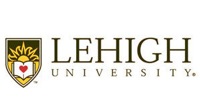Below is a summary of the abstract you submitted. Presenting author(s) is shown in bold.
If any changes need to be made, you can modify the abstract or change the authors.
You can also download a .docx version of this abstract.
If there are any problems, please email Dan at dar78@pitt.edu and he'll take care of them!
This abstract was last modified on March 16, 2021 at 3:56 p.m..

The Cluster N mycobacteriophage Butters was the subject of the SEA-GENES Research Project at Lehigh University in the spring 2020 and spring 2021 semesters. Butters is a temperate mycobacteriophage with an unusually small genome (41,491 base pairs; 66 open reading frames). Collectively, we successfully PCR amplified 57 Butters genes of which 34 were cloned into the pExTra vector, allowing for controlled expression from an upstream tet-inducible promoter. Eleven Butters genes were shown to be cytotoxic when overexpressed in the host Mycobacterium smegmatis mc2155. These were Butters genes 15, 28, 29, 38, 39, 45, 47, 48, 59, 61, and 62. Some of these genes are expected to be cytotoxic when overexpressed (e.g., gene 28 which encodes the holin protein and gene 48 which encodes the WhiB family transcription factor) demonstrating proof of principle for this experimental approach. Other cytotoxic genes encode known proteins that are not necessarily expected to have this effect when overexpressed [e.g., gene 15 (tail assembly chaperone) and gene 38 (immunity repressor)]. The other cytotoxic genes encode proteins with no known function (genes 29, 39, 45, 47, 59, 61 and 62). Several defense assays were performed and it was determined that overexpression of Butters gene 36 defends against homotypic infection by the Cluster N mycobacteriophages Butters and ShrimpFriedEgg, but allows infection by the heterotypic Cluster I1 mycobacteriophage Island3. Growth curve experiments were performed on M. smegmatis cultures individually overexpressing Butters genes 47 and 61. These experiments showed that gp47 is bacteriocidal when overexpressed while gp61 is bacteriostatic. Bacterial two-hybrid analyses were initiated to identify M. smegmatis proteins that physically interact with Butters gp47 and gp61. While Butters gp47 interacted with several different M. smegmatis proteins, we never identified the same putative interactor more than once. Hence, we hypothesize that Butters gp47 might be a “sticky” protein that randomly binds to M. smegmatis proteins in the bacterial two-hybrid screen. By contrast, Butters gp61 reproducibly associated with M. smegmatis proteins involved in DNA replication and repair (e.g., AAA+ ATPases and uracil DNA glycosylase). Our current hypothesis is that gp61’s bacteriostatic impact on M. smegmatis is caused by a transient arrest of DNA replication. Experiments are underway to test this hypothesis directly.

